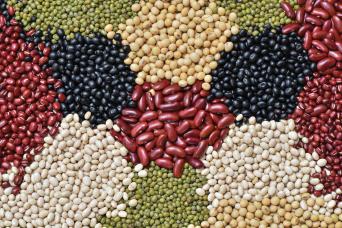
Slice It, Dice It, Serve It: Legumes!
by
Kieran McCourt, Weavers Way Ambler
Why dried?
- They’re often cheaper than canned.
- They’re full of fiber and protein, especially as an animal protein replacement.
- They help restore the soil they’re grown in by fixing atmospheric nitrogen back into it.
To soak or not to soak?
- Lentils and split peas do not require soaking before cooking.
- For larger legumes and beans, soaking helps shorten the total cooking time. Soaking can also help with the, um, musical side effects of eating beans.
Pro Tips:
- Easy cooking method: Use a heavy pot (like a Dutch oven) and cook in the large oven (this heats beans more evenly and causes less scorching).
- For creamy beans, soak in a brine overnight — roughly a ratio of one pound of beans to three tablespoons of salt mixed into four quarts of water. Cook as directed or as required by a recipe. Be sure to drain and rinse the beans before cooking.
- Beans keep in an airtight container in the fridge for use throughout the week, or can be portioned and frozen.
The lowdown on lentils:
- They cook quickly for a fast weeknight meal, often while you’re prepping other ingredients.
- Green and brown varieties maintain their shape when cooked and work great as part of a grain bowl. They also make delicious “bean” burgers, or a wonderful meatless base for Sloppy Joes.

